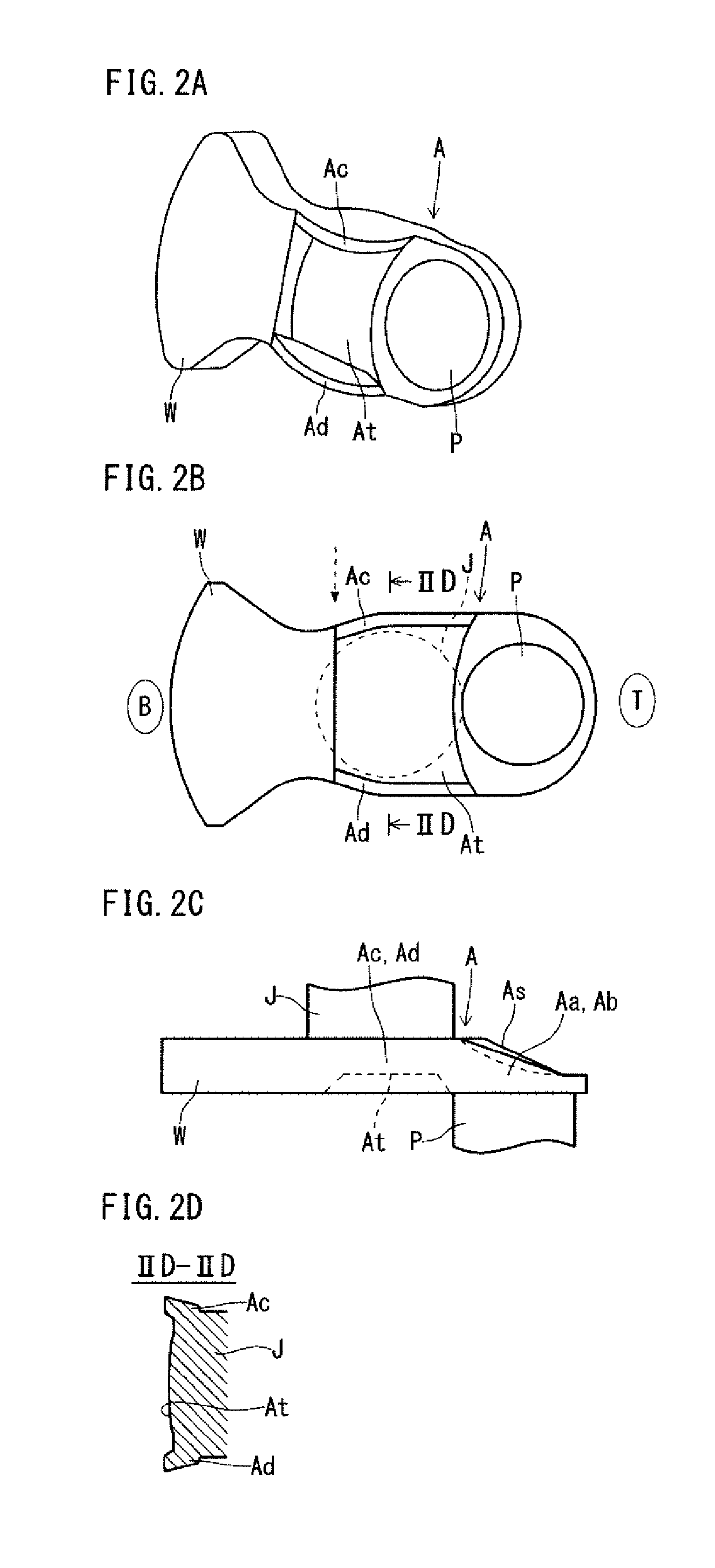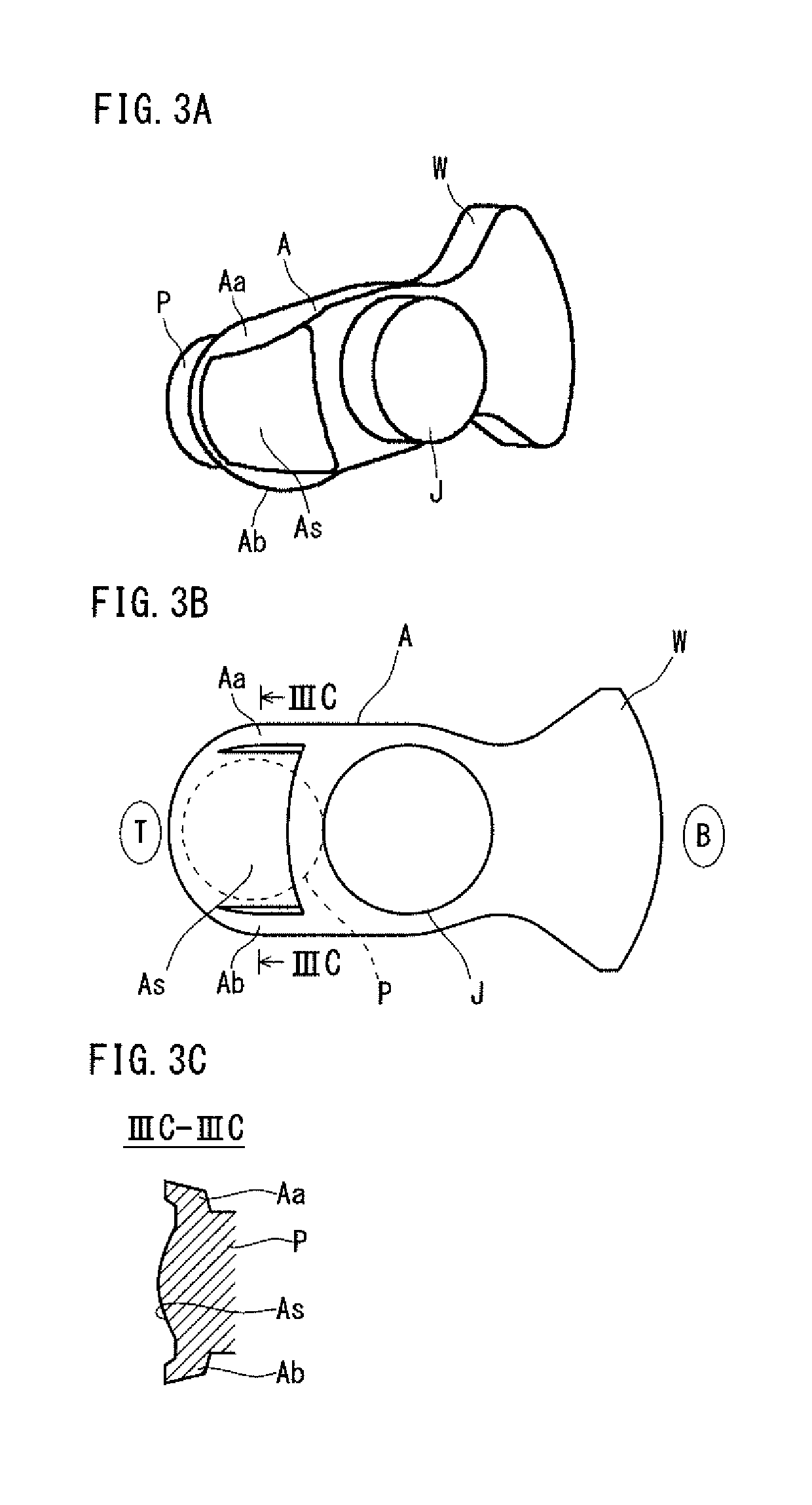Method for producing forged crankshaft
a crankshaft and crankshaft technology, applied in the direction of crankshafts, engine components, metal-working apparatus, etc., can solve the problems of difficult to produce such a forged crankshaft, difficult to remove the formed forged blank from the die, and prolong the life of the pin, so as to achieve simple process, reduce weight, and ensure stiffness
- Summary
- Abstract
- Description
- Claims
- Application Information
AI Technical Summary
Benefits of technology
Problems solved by technology
Method used
Image
Examples
Embodiment Construction
[0094]A forged crankshaft producing method according to an embodiment will hereinafter be described with reference to the drawings.
1. Shape of Crankshaft
[0095]A forged crankshaft that is the target of the present embodiment includes journals serving as a center of rotation, pins decentered from the journals, arms each connecting one of the journals and one of the pins adjacent thereto, and weights integrated with some or all of the arms respectively. Such a crankshaft is, for example, a forged crankshaft as shown by FIGS. 2A to 4B.
[0096]FIGS. 2A to 2D are schematic diagrams showing an example of the shape of a pin-facing surface of an arm of a crankshaft produced by a production method according to the present invention. FIG. 2A is a perspective view, FIG. 2B is a view showing the pin-facing surface, FIG. 2C is a view showing a side surface, and FIG. 2D is a sectional view along the line IID-IID. FIGS. 2A to 2D show one of the arms of the crankshaft, the arm incorporating a weight. ...
PUM
| Property | Measurement | Unit |
|---|---|---|
| inclination angles | aaaaa | aaaaa |
| inclination angles | aaaaa | aaaaa |
| inclination angles | aaaaa | aaaaa |
Abstract
Description
Claims
Application Information
 Login to View More
Login to View More - R&D Engineer
- R&D Manager
- IP Professional
- Industry Leading Data Capabilities
- Powerful AI technology
- Patent DNA Extraction
Browse by: Latest US Patents, China's latest patents, Technical Efficacy Thesaurus, Application Domain, Technology Topic, Popular Technical Reports.
© 2024 PatSnap. All rights reserved.Legal|Privacy policy|Modern Slavery Act Transparency Statement|Sitemap|About US| Contact US: help@patsnap.com










